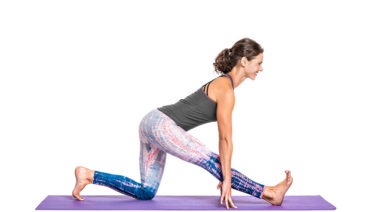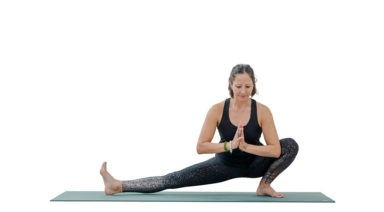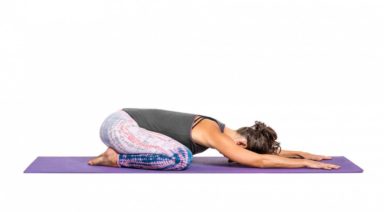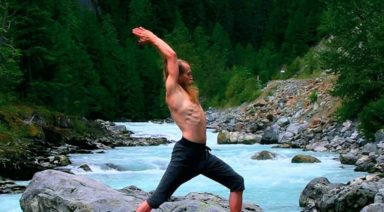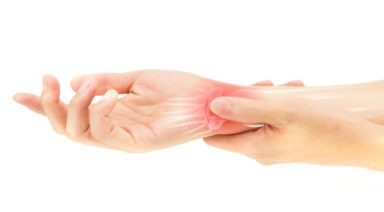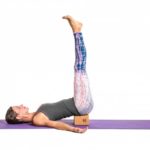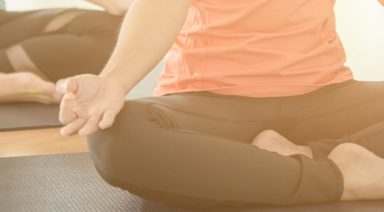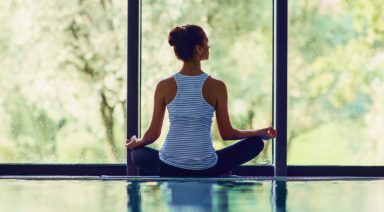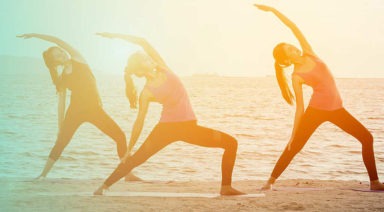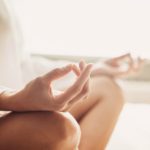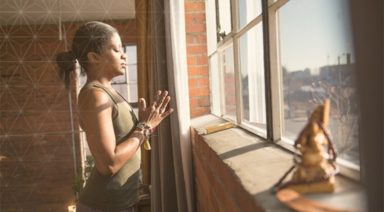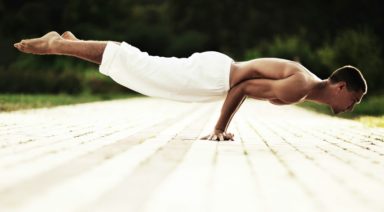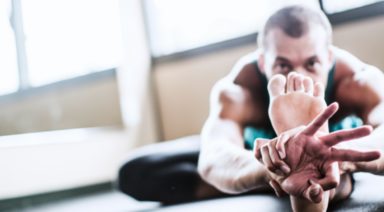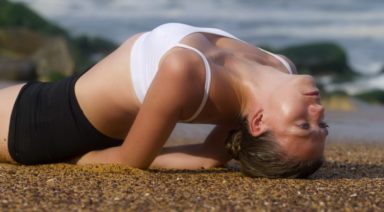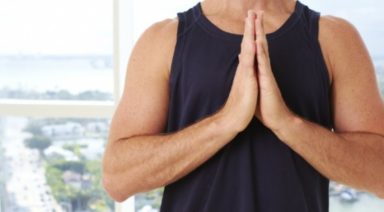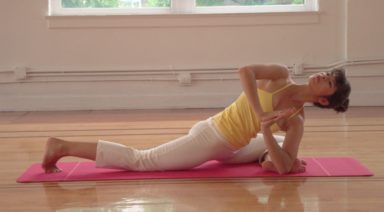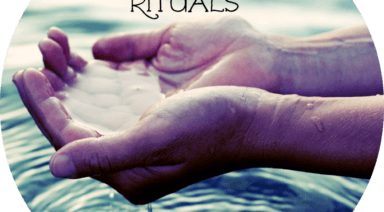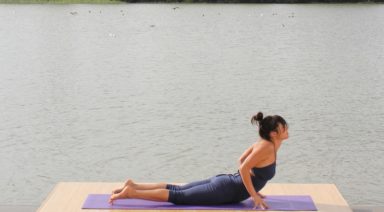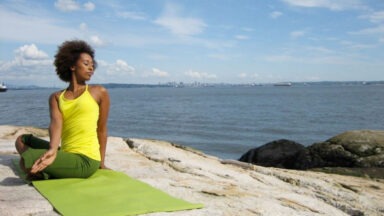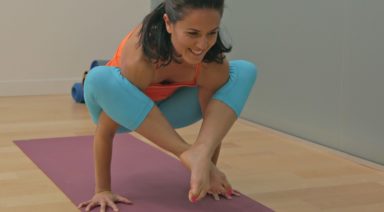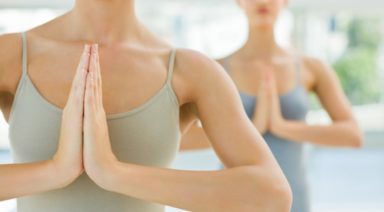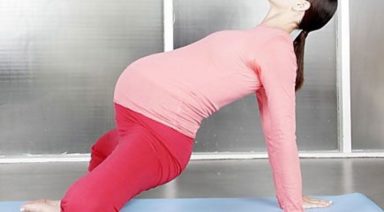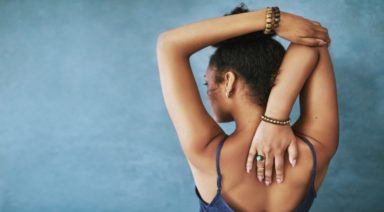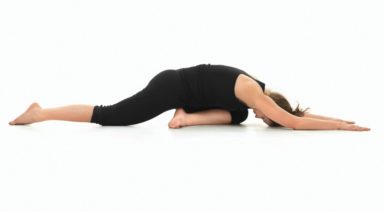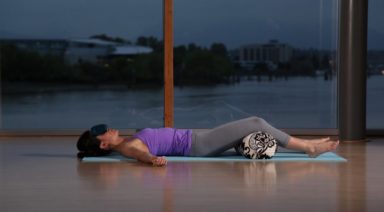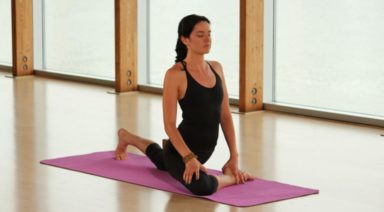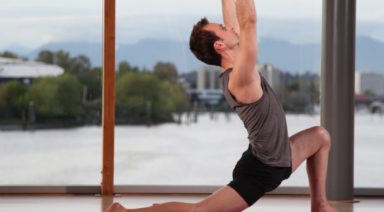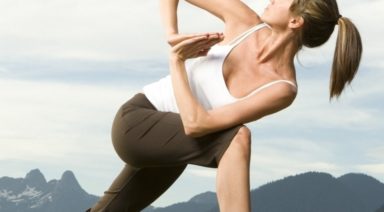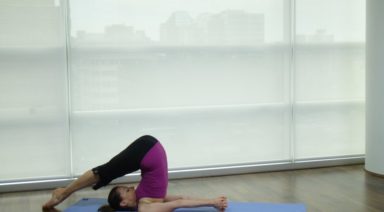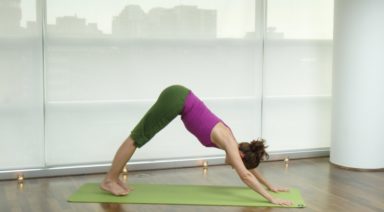Uttanasana: Standing Forward Bend

ADJUSTMENTS | BENEFITS | SEQUENCING | SANSKRIT | STEPS
A soothing posture for body and mind, uttanasana (OOT-tan-AHS-ahna), or standing forward bend, is straightforward but far from simple. Requiring flexibility in hamstrings, hips, and calves, uttanasana also requires patience. Watch the ebbs and flows in your body and life reflected in this simple posture.
Philosophy + Origin
In uttanasana, knowing when to accept intensity and when to be content with where you are is key to steady progress without injury or frustration. It’s easy to try to push for more — with uttanasana, this means wanting to be more flexible or pushing further into the pose. Rather than struggling, use the posture to practice santosha (contentment). Can you accept both the intensity and your capacity right now?
ADJUSTMENTS/MODIFICATIONS:
- Separate your feet to give your hamstrings room — keep your feet parallel.
- If your back is uncomfortable in this shape, practice with knees bent.
- If the ground seems far away, place your hands on blocks.
- To deepen the posture, hold onto the backs of your ankles or grasp opposite forearms behind your calves.
- To deepen the stretch at the backs of your legs, elevate the balls of your feet with a rolled mat or blanket
STEP-BY-STEP:
- Start standing with your hands on your hips. Exhale to hinge from the hips and bend forward. Think about creating as much length as possible from your hips to your head.
- Release your fingertips toward the ground or your blocks.
- Root down into the four corners of your feet.
- Release the back of your head and neck.
- On inhales, feel your torso lengthen, and on exhales, feel your chest reach toward your toes.
- Stay in uttanasana for up to one minute.
- To exit the pose, return your hands to your hips and slowly lift up, keeping the length in the front and back of your torso.
PREPARATORY POSES:
- Downward-facing dog | Adho mukha svanasana
- Head to knee pose | Janu sirsasana
- Reclined hand to toe pose | Supta padangusthasana
SEQUENTIAL POSES:
- Wide-angle forward fold | Upavistha konasana
- Half standing forward bend | Ardha uttanasana
- Seated forward fold | Paschimottanasana
COUNTER POSES:
- Tadasana | Mountain pose
- Childs pose |Balasana
- Resting pose | Savasana
SANSKRIT:
- Ut = intense
- Tan = to stretch
- Asana = pose
PHYSICAL BENEFITS:
- Stretches hips, hamstrings, calves.
- Reduces headaches.
- Improves sleep.
ENERGETIC BENEFITS:
- Calms and soothes the mind.
- Reduces fatigue and anxiety.
- Relieves stress.
Legal Disclaimer Before participating in any exercise program or using any fitness products or services that may be described and/or made accessible in or through the Gaia Website and/or the Services, you should consult with a physician or other healthcare provider. Read more about Gaia’s Terms Of Use.
Ardha Hanumanasana: Half Front Splits Pose
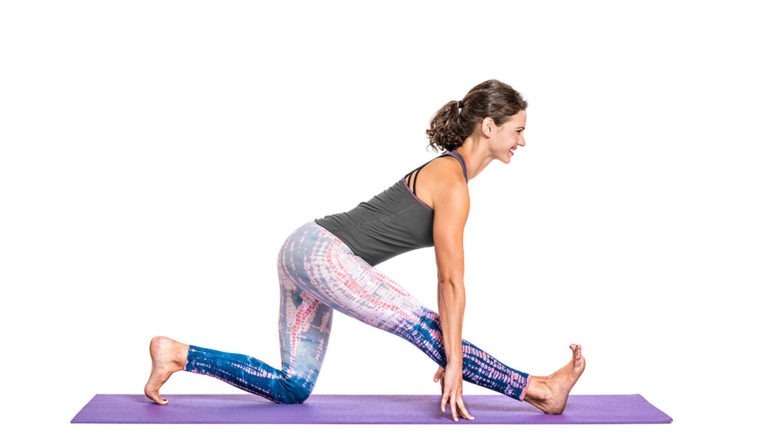
ADJUSTMENTS | BENEFITS | SEQUENCING | SANSKRIT | STEPS
Ardha hanumanasana (are-dah hah-new-mahn-AHS-ah-nah) is a big stretch for hamstrings. This pose is more approachable than full hanumanasana and strengthens the muscles needed to practice front splits safely with the correct muscles properly engaged.
Philosophy + Origin
One of the main characters of the Ramayana is Hanuman, the famous monkey god, devotee of Lord Rama, and son of Vayu (the god of wind). He is celebrated in the pose hanumanasana, which physically represents his famous “leap of faith,” taking him across the ocean from India to Sri Lanka. Ardha hanumanasana, the preparatory pose for hanumanasana, can represent the stability and strength needed to make grand, world-changing (or life-changing) gestures. Rather than only focusing on gaining flexibility, practice ardha hanumanasana to create a healthy balance of flexibility and strength. When practicing ardha hanumanasana, remind yourself of the dangers of only being flexible in life; in order to really get where you want to go, you must also be strong and stable.



